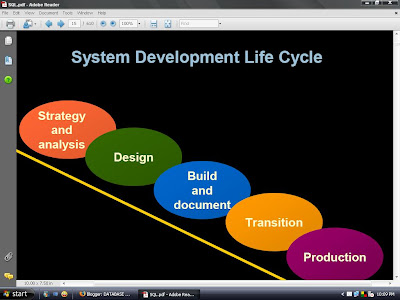Objectives
After completing this lesson, you should be ableto do the following:
• List the features of Oracle9i
• Discuss the theoretical and physical aspects of
a relational database
• Describe the Oracle implementation of the
RDBMS and ORDBMS.
Oracle9i: Object Relational Database Management System
• User-defined data types and objects• Fully compatible with relational database
• Support of multimedia and large objects
• High-quality database server features.
ORACLE INTERNET PLATFORM

System Development Life Cycle
Data Storage on Different Media

Relational Database Concept
• Dr. E.F. Codd proposed the relational model for
database systems in 1970.
• It is the basis for the relational database
management system.
• The relational model consists of the following:
– Collection of objects or relations
– Set of operators to act on the relations
– Data integrity for accuracy and consistency
Definition of a Relational Database



Data Models

Entity Relationship Model

Entity Relationship Modeling Conventions

Relating Multiple Tables

Relational Database Terminology

Relational Database Properties
A relational database:• Can be accessed and modified by executing
structured query language (SQL) statements
• Contains a collection of tables with no physical
pointers
• Uses a set of operators
Communicating with a RDBMS Using SQL

Relational Database Management System

SQL Statements

Summary
• The Oracle9i Server is the database for Internetcomputing.
• Oracle9i is based on the object relational database
management system.
• Relational databases are composed of relations,
managed by relational operations, and governed
by data integrity constraints.
• With the Oracle Server, you can store and manage
information by using the SQL language and
PL/SQL engine.


No comments:
Post a Comment